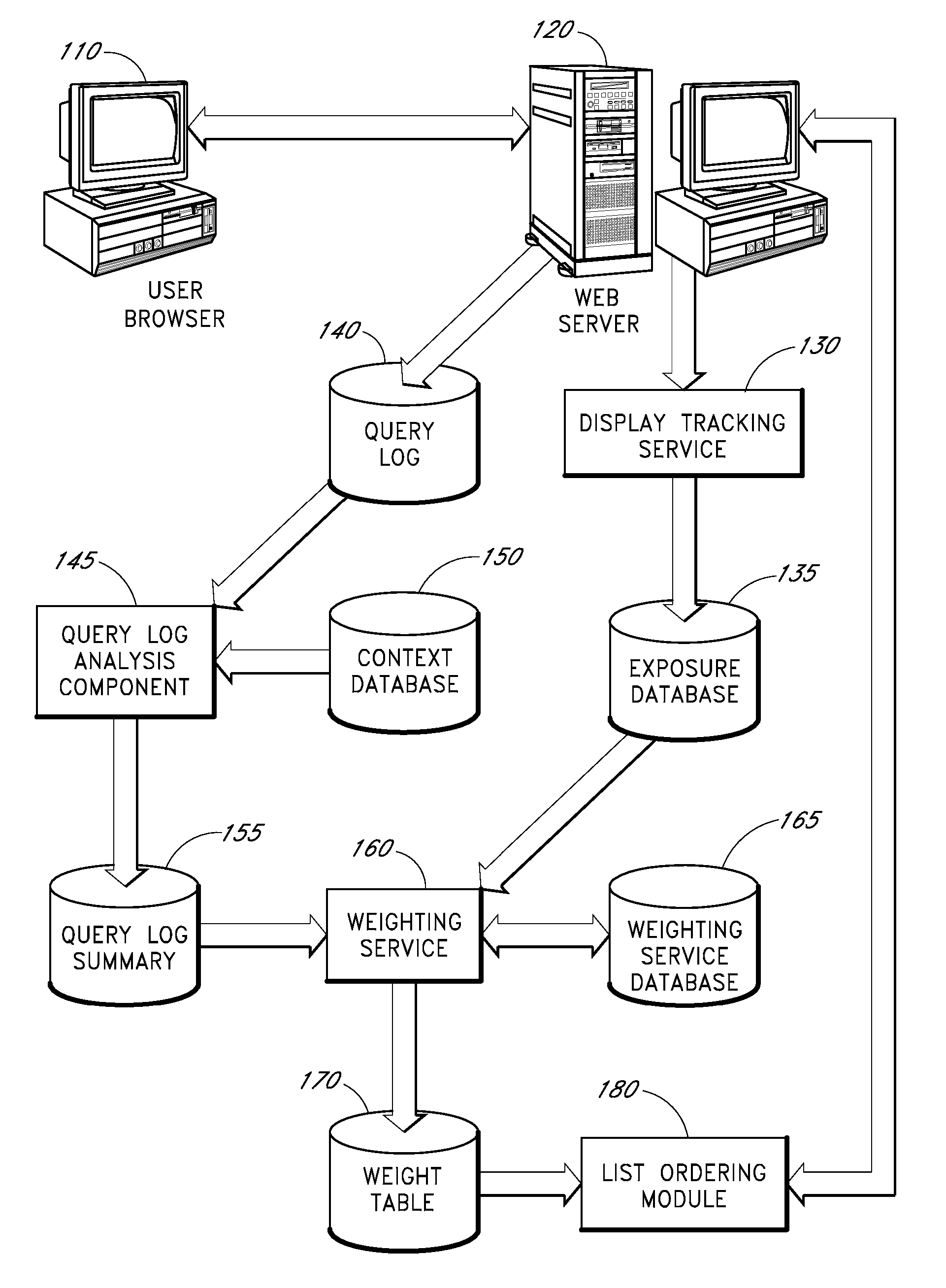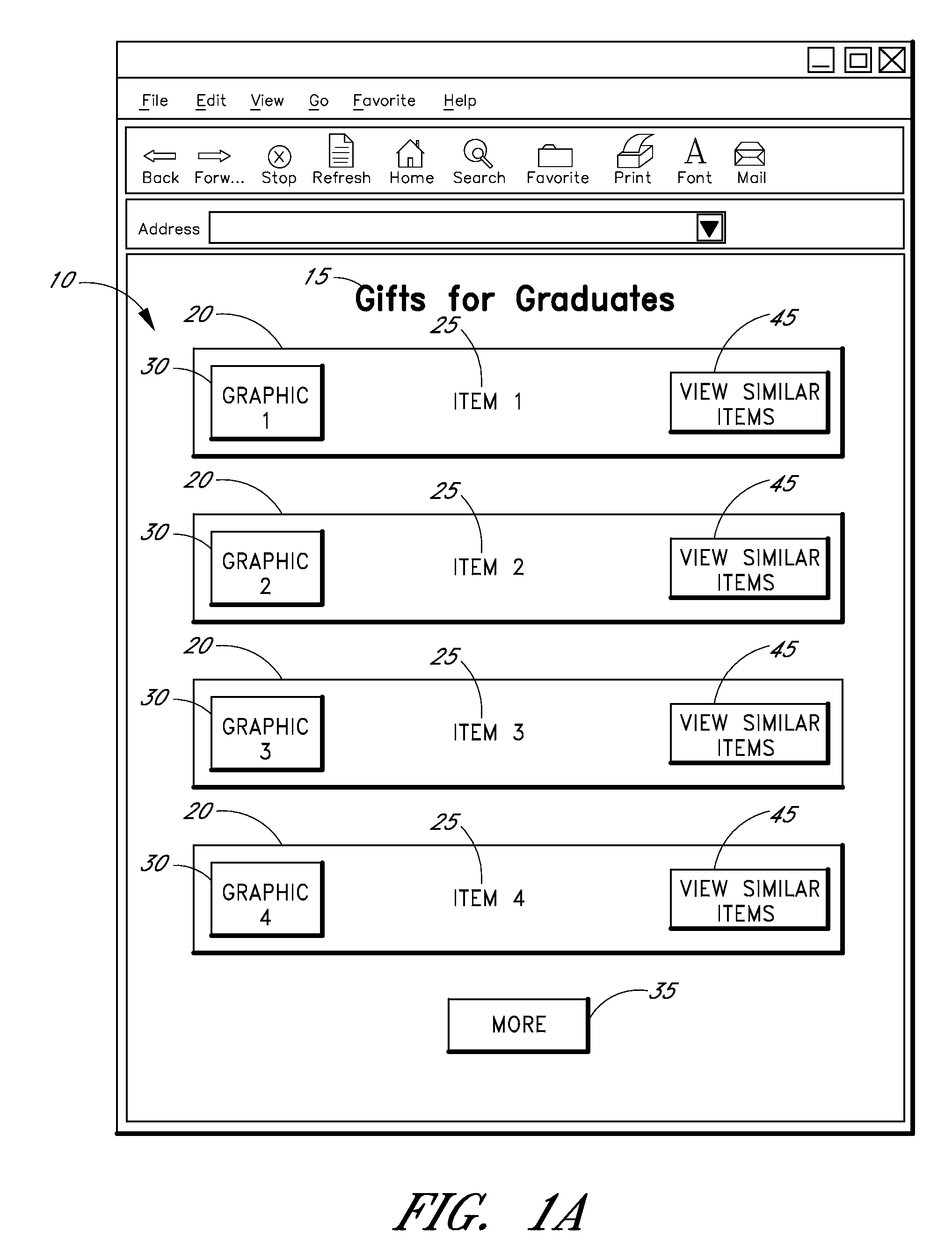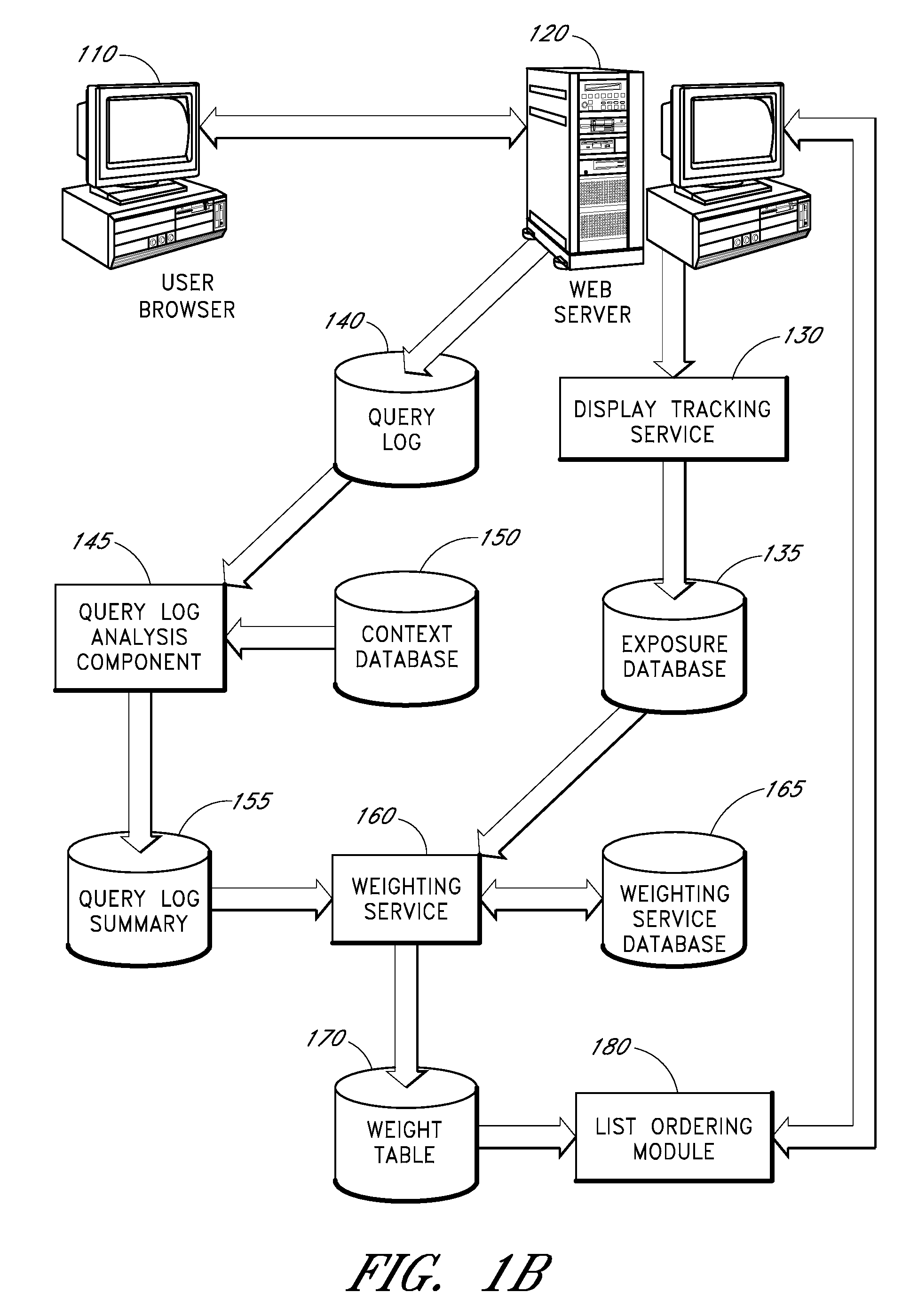Computer processes for adaptively selecting and/or ranking items for display in particular contexts
a computer process and adaptive selection technology, applied in the field of data processing methods, can solve the problems of inability to effectively target their marketing directly, inability to provide a system that uses conventional recommendation algorithms, and static lists
- Summary
- Abstract
- Description
- Claims
- Application Information
AI Technical Summary
Benefits of technology
Problems solved by technology
Method used
Image
Examples
Embodiment Construction
[0019] A preferred embodiment will now be described and illustrated in which the system and associated methods are implemented using HTML (HyperText Markup Language) encoded web pages of a web site. As will be recognized, the invention may also be implemented using other types of multi-user interactive systems, including web sites that use other markup languages, online services networks that use proprietary data formats (e.g., America Online and MSN), and systems in which users browse and make purchases by voice.
[0020] Throughout the description, reference will be made to various implementation-specific details. These details are provided to fully illustrate a specific embodiment of the invention, and not to limit the scope of the invention. The various processes described herein are preferably performed by using software executed by one or more general-purpose computers. The processes could alternatively be embodied partially or entirely within special purpose hardware without al...
PUM
 Login to View More
Login to View More Abstract
Description
Claims
Application Information
 Login to View More
Login to View More - R&D
- Intellectual Property
- Life Sciences
- Materials
- Tech Scout
- Unparalleled Data Quality
- Higher Quality Content
- 60% Fewer Hallucinations
Browse by: Latest US Patents, China's latest patents, Technical Efficacy Thesaurus, Application Domain, Technology Topic, Popular Technical Reports.
© 2025 PatSnap. All rights reserved.Legal|Privacy policy|Modern Slavery Act Transparency Statement|Sitemap|About US| Contact US: help@patsnap.com



